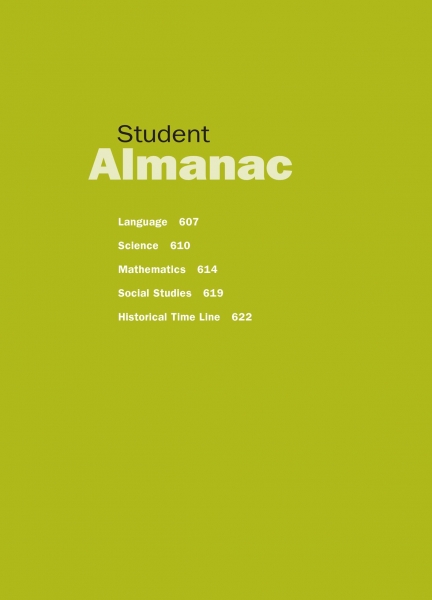Page 606 from

Start-Up Activity
Curiosity may have killed the cat, but it made human beings the dominant species on our planet. Human curiosity invented . . .
- language so that we could talk about things that are right in front of us and also things far away and long ago;
- science to learn about our world—to measure it, test it, explore it, prove it;
- mathematics to quantify our learning and calculate new knowledge; and
- history so that we could think back on the long, strange journey we have taken.
This student almanac provides a feast for human curiosity. It can help students in classes across the curriculum and can provide hundreds of writing ideas and points of inspiration. Show your students these pages. Encourage them to explore. Reassure them that this is their almanac—not information you will teach directly, but information they can dip into as their curiosity dictates.
Think About It
“Once we believe in ourselves, we can risk curiosity, wonder, spontaneous delight, or any experience that reveals the human spirit.”
—e. e. cummings

Start-Up Activity
Curiosity may have killed the cat, but it made human beings the dominant species on our planet. Human curiosity invented . . .
- language so that we could talk about things that are right in front of us and also things far away and long ago;
- science to learn about our world—to measure it, test it, explore it, prove it;
- mathematics to quantify our learning and calculate new knowledge; and
- history so that we could think back on the long, strange journey we have taken.
This student almanac provides a feast for human curiosity. It can help students in classes across the curriculum and can provide hundreds of writing ideas and points of inspiration. Show your students these pages. Encourage them to explore. Reassure them that this is their almanac—not information you will teach directly, but information they can dip into as their curiosity dictates.
Think About It
“Once we believe in ourselves, we can risk curiosity, wonder, spontaneous delight, or any experience that reveals the human spirit.”
—e. e. cummings